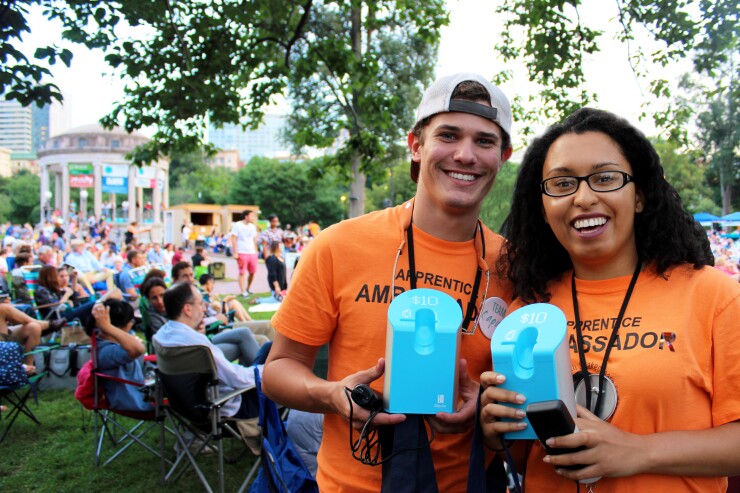DipJar’s mission when it launched in 2012 was to provide a simple, secure device for consumers with no cash in their pockets to leave a small tip for cashiers through a computerized tip jar. The company quickly learned that consumers wanted to be more generous.
Five years after its introduction, the device is answering a bigger need for nonprofits and other organizations facing growing numbers of cashless consumers who want to make a contribution — with no upper limit in sight.
“It’s been really interesting to see donation sizes go up as customers innovate in how they use DipJars. We started with mostly $1 tips and small donations, but now we see $50, $100, $250 and even $1,000 dips every day," said Ryder Kessler, co-founder and CEO of the New York-based startup.

DipJar spent a year retooling the original device’s hardware and software and in 2015 released a new version designed to function as a more robust payment processing device that’s now gaining popularity with local schools, churches, events and other organizations, Kessler said.
Volunteers from the Salvation Army and Susan G. Komen breast cancer organization use DipJar, along with educational, entertainment and community groups that cite the device’s simplicity and portability as its key advantage versus other, more complicated approaches to gathering funds.
“The most excitement is coming from the nonprofit space, where there’s a tremendous need for innovation for in-person collections," Kessler said.
Operators can manage DipJar online, tracking contributions and changing the contribution amount in real time, with funds disbursed to a linked bank account weekly or monthly.
DipJar’s revenue comes from three sources: $399 for the DipJar itself, plus an ongoing subscription fee for the access to the platform and payment processing fees of 17 cents plus 3% of each credit or debit card transaction.
The device lights up and makes a sound to confirm every donation and because it works indoors and outdoors and in all types of environments, organizations continue to help DipJar hone the product, Kessler said.
In some settings, organizations encourage users to pass the device around at church services and other gatherings.
DipJar has an electric plug and it communicates with app via cellular data, but it can also run for up to 11 hours using the rechargeable battery pack DipJar sells. Users are encouraged to customize the jars, and the company can print an organization’s logo on devices, and offers volume discounts.
“We love watching how organizations take the solution and adapt it to their needs to engage visitors, volunteers and event attendees to support their work,” Kessler said.
The next phase for the company will be expanding DipJar’s scale to reach more nonprofit organizations with a need for gathering funds at events, and continuing to refine the DipJar device, said Kessler, who previously worked at a cab-sharing startup called Bandwagon.
DipJar has gathered nearly $3 million in two rounds of seed funding from Project 11 Ventures and individuals, and it’s continuing to tweak the design of its device, Kessler said.





